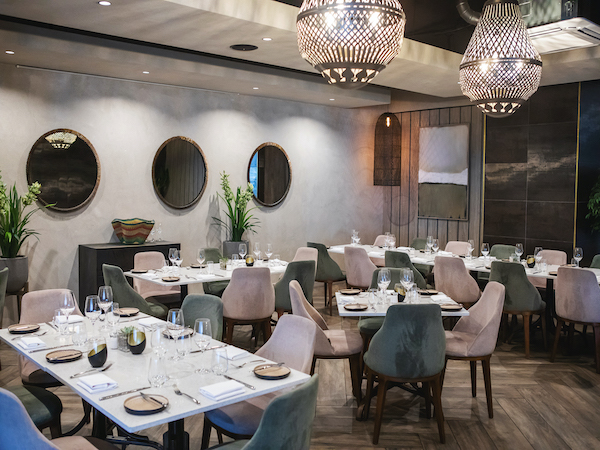News
Demystifying de-alcoholised wines
Thursday, October 3rd, 2024Non-alcoholic drinks are experiencing a surge in popularity as more people embrace mindful drinking and healthier lifestyles. With sophisticated flavours and creative craftsmanship, alcohol-free options are proving that enjoyment doesn’t need alcohol to be elevated.
Award-winning drinks writer Leah van Deventer chats to Leopard’s Leap head winemaker, Renier van Deventer, to learn all about their de-alcoholised range, Natura.
View this post on Instagram
Why did Leopard’s Leap introduce a de-alc category?
Renier: At Leopard’s Leap, it’s a big thing to celebrate diversity – within our brands and the wines that we do. We’ve got a very diverse portfolio, from entry level right through to top-tier premium, including sparkling wines, dry wines and sweet wines. It was just a natural progression to have something on the flip side of alcohol as well; a de-alcoholised wine to offer our clients within our diverse portfolio.
What’s the difference between de-alc, alcohol free and low alcohol?
Renier: With de-alcoholised, you start with a base wine. It then undergoes a process of vacuum distillation. This basically means a separation of the components while under a vacuum. The normal boiling point of wine is around 88–90°C, slightly lower than water, because it’s got the alcohol that accelerates the process, and the density is lower. Under a vacuum, the boiling point is about 20°C, which is the normal storage temperature of wine; we don’t have to heat it. The vacuum distillation machine has different columns, and the major components – alcohol, water and flavours – get distilled into these different chambers. You then put the water component and the flavour component back together, and normally end up with a 0.2%, 0.3% wine. Low-alcohol wines is a different category, between 4.5% to 8% alcohol wine. Usually, you can harvest for that. You just pick the grapes earlier, at a lower sugar level. These are wines with a high, fresh acidity, but also with the low alcohol and very little sweetness.
You can also use the alcohol-removal method. You’ll have a wine, for example, sitting at 13%, and you reduce it to 8%.
With alcohol-free, you start with a water base, and then you add onto it. You work with flavour houses to create an end product that can taste exactly like wine, using other natural products.
So, does Natura de-alc start as regular wine then
Renier: Yes – a wine that we make. We start with an excellent product that can transcend into the final de-alcoholised product.
How does removing the alcohol affect the end product
Renier: The alcohol plays an integral part in the balance, structure and texture of the wine. The concentrated essence that’s captured in one of the chambers of the vacuum machine still gives that “wineyness”, but now we need to colour in the whole picture again.
You need to play with alternatives to rebuild that mouthfeel. We add a bit of tannins and quite a lot of sugar.
You must also lose volume, yes?
Renier: Yes. If I want to bottle about 10,000l of de-alcoholised wine, I need to start with about 12,500l of wine.
That’s why de-alcoholised wines are a bit more expensive; the loss you take is usually around 10% to 15% on volume, so compared to a normal still wine, you’ll probably have a 10% to 15% higher mark-up.
From the grapes right through to the winemaking process, and what we give through to the shelf, we really try to stay value-for-money and competitive with our pricing.
What do the two Naturas, white and red, taste like?
Renier: We use Chenin Blanc grapes from the Swartland and Paardeberg regions for the white. This has a lot of tropical and guava flavours, and a nice, rich palate to it.
The Natura white is very fresh, very fruity. Drink it super-cold because that gives that zestiness and zinginess on the palate as well.
I must say I’m quite proud of our red Natura because it’s like a red wine, with beautiful tannins and a nice red-wine structure.
We use Pinotage and Shiraz grapes. The Pinotage is that fruit bomb – red berries, strawberries – and the Shiraz gives a bit of spice, and structure and texture on the palate, which in the final de-alc product is still quite prominent.
Can you pair de-alc wines with food, as with regular wine?
Renier: With de-alc wines, you’re never going to have massive bombs specifically made to pair with food, like our Culinaria range at Leopard’s Leap – but the Natura White is good with anything light and refreshing, like summer salads, fish, some prawns and oysters.
There’s a nice, fruity sweetness in the wine, so it will work beautifully with a strong curry too, to break the spicy flavours.
The Pinot Shiraz will make a nice chops-and-wors braai wine because it’s got the structure – the palate – and the fruity flavours. If you keep the dish light, it will work well.
Would you say that Natura is a healthy option for drinking?
Renier: 100ml of regular white wine, let’s say with 13.5% alcohol, has 350-390 kilojoules, whereas Natura white has 36 kilojoules.
So, just from that point of view, definitely. Even with the added sugar, it’s still the healthier option.
Is Natura an option for the vegan community?
Renier: Yes. Everything is plant-based in the Natura. We only use pea- and potato-based proteins.
As an Eat Out reader, you stand the chance to WIN six bottles each of Leopard’s Leap Natura White and Red, plus a rotisserie lunch for four people. Enter here!












